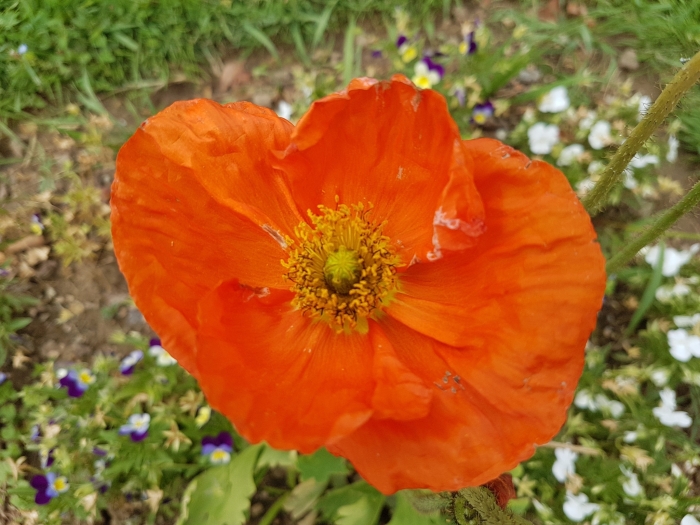Arctic Poppy
(Papaver nudicaule)
Arctic Poppy (Papaver nudicaule)
/
/

© John Samuel
CC BY 4.0
Image By:
© John Samuel
Recorded By:
Copyright:
CC BY 4.0
Copyright Notice:
Photo by: © John Samuel | License Type: CC BY 4.0 | License URL: http://creativecommons.org/licenses/by/4.0/ | Uploader: johnsamuel | Publisher: iNaturalist |
























Estimated Native Range
Summary
Papaver nudicaule, commonly known as the Arctic poppy or Iceland poppy, is a short-lived perennial often treated as a biennial, native to the subarctic and cool temperate regions of the Northern Hemisphere, including the tundra and mountainous areas of North America, Northern Europe, and Central Asia. It typically grows to a height of 12 to 24 inches (30-60 cm) and spreads 12 inches (30 cm) wide. The Arctic poppy is characterized by its large, papery, bowl-shaped flowers that bloom in late spring to early summer. The flowers come in a range of colors, including white, yellow, orange, and pink, and are quite showy, attracting pollinators such as bees and butterflies.
The Arctic poppy is valued for its ability to bring bright splashes of color to rock gardens, alpine displays, and borders in cooler climates. It is relatively easy to maintain, requiring minimal care once established. This plant is best grown in well-drained, sandy or gravelly soils and requires full sun exposure to thrive. While it is generally pest-free, it can suffer from root rot if overwatered or planted in poorly draining soils. It is not typically invasive but can self-seed in ideal conditions. Due to its potential toxicity, it should be planted with caution around pets and children.CC BY-SA 4.0
The Arctic poppy is valued for its ability to bring bright splashes of color to rock gardens, alpine displays, and borders in cooler climates. It is relatively easy to maintain, requiring minimal care once established. This plant is best grown in well-drained, sandy or gravelly soils and requires full sun exposure to thrive. While it is generally pest-free, it can suffer from root rot if overwatered or planted in poorly draining soils. It is not typically invasive but can self-seed in ideal conditions. Due to its potential toxicity, it should be planted with caution around pets and children.CC BY-SA 4.0
Plant Description
- Plant Type: Herb
- Height: 1-2 feet
- Width: 1-2 feet
- Growth Rate: Moderate
- Flower Color: Orange, Red, White, Yellow
- Flowering Season: Spring, Summer
- Leaf Retention: Deciduous
Growth Requirements
- Sun: Full Sun
- Water: Medium
- Drainage: Fast, Medium
Common Uses
Border Plant, Butterfly Garden, Deer Resistant, Low Maintenance, Potted Plant, Rock Garden
Natural Habitat
Native to the tundra and mountainous areas of North America, Northern Europe, and Central Asia, including subarctic and cool temperate regions
Other Names
Common Names: Iceland Poppy , Icelandic Poppy , Rishiri-Hina-Geshi , Ye Ying Su
Scientific Names: Papaver nudicaule , Papaver alpinum var. nudicaule , Papaver coloradense , Papaver nudicaule f. nudicaule , Papaver nudicaule f. typicum , Papaver nudicaule var. nudicaule , Papaver parkmannii , Papaver rubro-aurantiacum
GBIF Accepted Name: